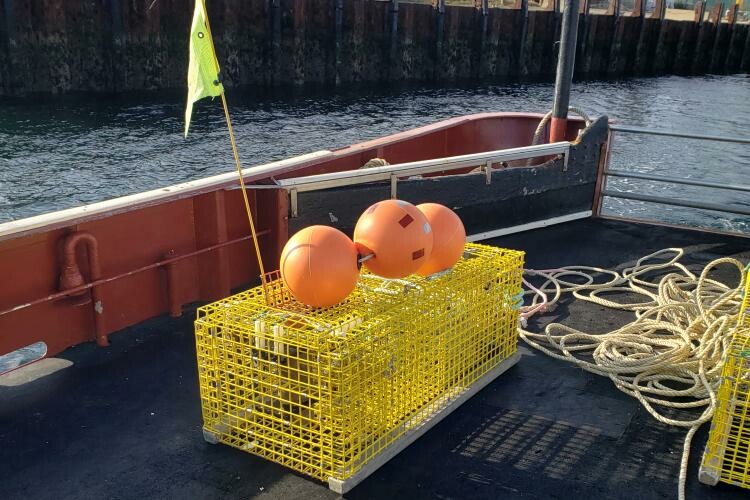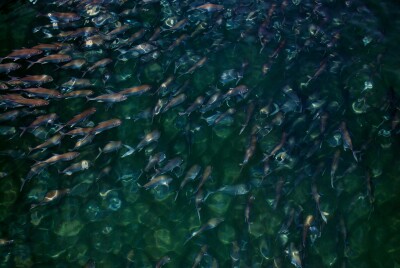Allow me to touch a “third rail” of fisheries politics: Lobstermen, crabbers, and other fishermen currently in the crosshairs of environmental groups over whale entanglements need to get behind ropeless fishing technology. On-demand gear can keep you on the water when the presence of whales would otherwise trigger a closure, it’s not about admitting defeat but find opportunities to keep fishing.
Coming is the time when trap fisheries will face two options: start using ropeless gear, or lose significant chunks – if not all – of the fishing season. Resistance now will likely put many in a world of pain later.
Over the years I have participated in numerous fixed gear fisheries in the North Pacific. I have also written extensively on whale entanglements in West Coast Dungeness crab and in other fisheries here for National Fisherman and in other outlets. I often find myself as not only a bridge builder but also an antagonist.
I’m willing to call out the bad actors and misdeeds within the commercial fishing industry while also critical of the bad faith engagement and the reckless hyperbole some of the environmental organizations using both the courts and media to attack working-class fishermen. In this position I found myself resistant to ropeless fishing gear, seeing it as an unfounded and expensive proposition.
But over the past few years I have changed my mind. I now see ropeless as the best forward to save fisheries, whales, and the reputation of an industry currently facing a public relations crisis.
There are the regular talking points against pop-up fishing gear: it’s untested, it doesn’t work, it’s too expensive, results in too much gear loss and – in turn – ghost gear, there are safety issues, virtual-gear marking hasn’t proven to be effective at scale, so on and so forth.
The best way to address those concerns? Start testing and tinkering now. There are nearly a dozen pop-up mechanisms that are currently available on the market or are being tested as prototypes. Left to engineers, biologists, fisheries managers and ropeless developers, pop-up gear will most certainly remain clunky and time-consuming.
Ropeless will only become safe, efficient, and economical if the ingenuity and hard-earned knowledge of those who use fishing gear for a living begin embracing the technology to refine it on the small scale before it is launched at scale.
Speaking of scale, it’s clear that we are years away from a smooth rollout of ropeless and other pop-up technologies at scale. Throughout the world ropeless as only been deployed commercially under experimental fishery permits and in small, niche fisheries that lack the size and economic clout of Dungeness crab and American lobster. Supply-chains are still being developed, so even if some environmental advocacy groups had their way and ropeless was mandated in all fixed gear fisheries in the next five years, there would a major shortage because the supply of ropeless technologies is limited.
Furthermore, specific ropeless technologies might be best suited for a specific fisheries or application. Different captains will have different preferences and price points. Now is a time to figure that out.
Virtual-gear marking is a significant challenge. Surface Global Positioning System data might work fine in some fisheries, while underwater acoustic modems might be necessary in others to avoid significant gear conflicts. It’s not going to improve in a lab, it’s going to improve by being used by fishermen on the water, with feedback going back to the technologists to refine.
The biggest obstacle to the development of ropeless fishing gear is the intransigence of most of the fishing industry – yes, most. Fishermen open to testing ropeless gear on both coasts have been met with insults, threats, and in certain cases sabotage. There are fishermen in some coastal communities – here’s looking at you Maine and California – that test gear in secret for fear of retaliation from their peers. Many have either stopped participating in trials or have avoided them altogether to avoid the backlash from their industry.
As for costs? In the short term there are millions of dollars of public and private funds available to purchase pop-up gear during these early stages. Gear lending libraries can assist in getting people on the water, making money when they’d otherwise be tied up, to tinker, test, and refine. As supply chains mature and gear developers are forced to compete on price points, the cost of ropeless gear will come down – microeconomics 101.
In some regards, I get it. As soon as you show ropeless fishing gear to be effective on the small scale, it could be shoved down your throat before it’s economical at scale. To paraphrase one comment during a panel discussion on ropeless at the 2021 Pacific Marine Expo, ropeless could be the rope we’ve given to hang ourselves.
Allow me to flip that grim metaphor and ask, what if you’re already holding on to that rope?
Some of you truly believe ropeless is an existential threat to your livelihood. I might disagree with you, but I get it, when you think you’re facing an existential threat – pushed by people with soft hands who can’t tie a bowline – you’re going to dig in and resist.
Many trap fisheries are standing headlong into to a tempest that might leave them battered and broken. On the East Coast, the further the population of North Atlantic right whales fall towards extinction the more pressure fisheries will face. It’s a public relations nightmare. Blaming the Canadians, who in fact have leaped ahead of U.S. fisheries in the deployment of ropeless, isn’t the best way to repair a reputation – especially when South Park already made that joke two decades ago.
On the West Coast, the situation is different, populations of blue and humpback whales are on the rise, gray whales were until a recent unusual mortality event – not likely related to fishing activity – pushed their populations down. But the fact remains, the fishing season will continue to be squeezed to protect whales from entanglement unless ropeless is deployed.
This is really complicated and not easy. A changing climate can be blamed for the increased number of whale entanglements on both coasts. Fishermen now find themselves in a situation where they are being told to change because the environment they work in is changing with little fault of their own. It sucks.
My point here isn’t to say ropeless and only ropeless now, it’s only to say become part of the process and not the resistance. Traditional gear should be fine when the risk to whales is negligible. Fishery managers should start employing to technologies to detect whales for dynamic management to protect the fishing industry from ugly headlines. But ropeless fishing gear can be effective and will likely be the future, best make it work for you before it’s pushed on you.







